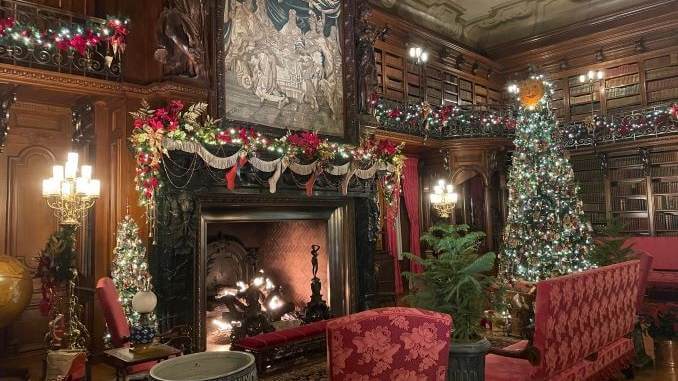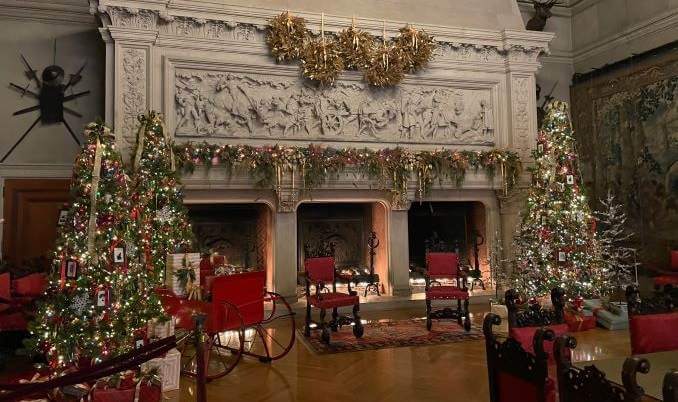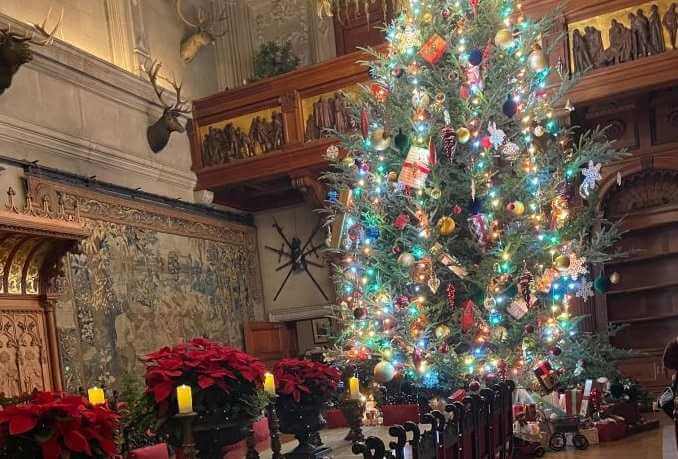The Biltmore Estate at Christmas: A Reminder of Gilded Age Luxury and Inequality
All photos by Garrett Martin
When the disgustingly wealthy railroad heir George Washington Vanderbilt II (or maybe the III—the family literally couldn’t decide what number to give him) built a massive mansion outside Asheville in the 1890s, he probably didn’t expect working stiff plebes to regularly traipse throughout it mere decades later. That’s the ultimate fate of Biltmore House, though. Originally built to keep George’s branch of Vanderbilts away from the hoi polloi, it’s now an architectural Disneyland—a Victorian history museum devoted entirely to how the richest of the rich lived at the turn of the century.
The 250 room mansion is the heart of the popular tourist attraction the Biltmore Estate, and close to 1.5 million guests explore the house’s four acres every year. It is truly a ridiculous house, with almost three dozen bedrooms, a large dining hall that looks like something the Knights of the Round Table would hang out in, a sprawling complex of staff quarters in the basement, and its own elevator, bowling lane, and indoor pool. (If the Biltmore is any indication, swimming pools in the 1890s were literally just big rooms full of water, with ropes attached to the walls to keep swimmers from sinking to the bottom.) It is still the largest house in the United States, almost 130 years after the Vanderbilts first moved in. It is entirely too much house.

That size is one of the reasons the Biltmore is such a great place to visit at Christmas. Paying to visit somebody else’s house is a weird notion at any time of year, even if it’s a house that nobody’s actually lived in for about 70 years. But during the holidays the Biltmore becomes more than a historical curiosity or a glimpse into Gilded Age excess. It turns into a gorgeously decorated Christmas wonderland with a style that’s so old-fashioned and traditional that it feels like the primordial Christmas—the kind the old songs are sung about, and that our grandparents or great-grandparents might have known, if they grew up with exorbitant wealth and a live-in staff to set up all the trees and hang all the lights.
How many trees are we talking about here? Over 60. Lights? Try 45,000 or so—not counting 250 candles, or the 135,000 lights found elsewhere on the estate’s grounds. This is a mansion that’s over 178,000 square feet big. It has, again, 250 rooms. It’s huge, almost incomprehensibly so, and there’s a lot of room for Christmas trees with all the fixins.
-

-

-

-

-

-

-

-

-

-

-

-

-

-

-

-

-

-

-

-

-

-

-

-

-

-

-

-

-

-

-

-

-

-

-

-

-

-

-

-









































